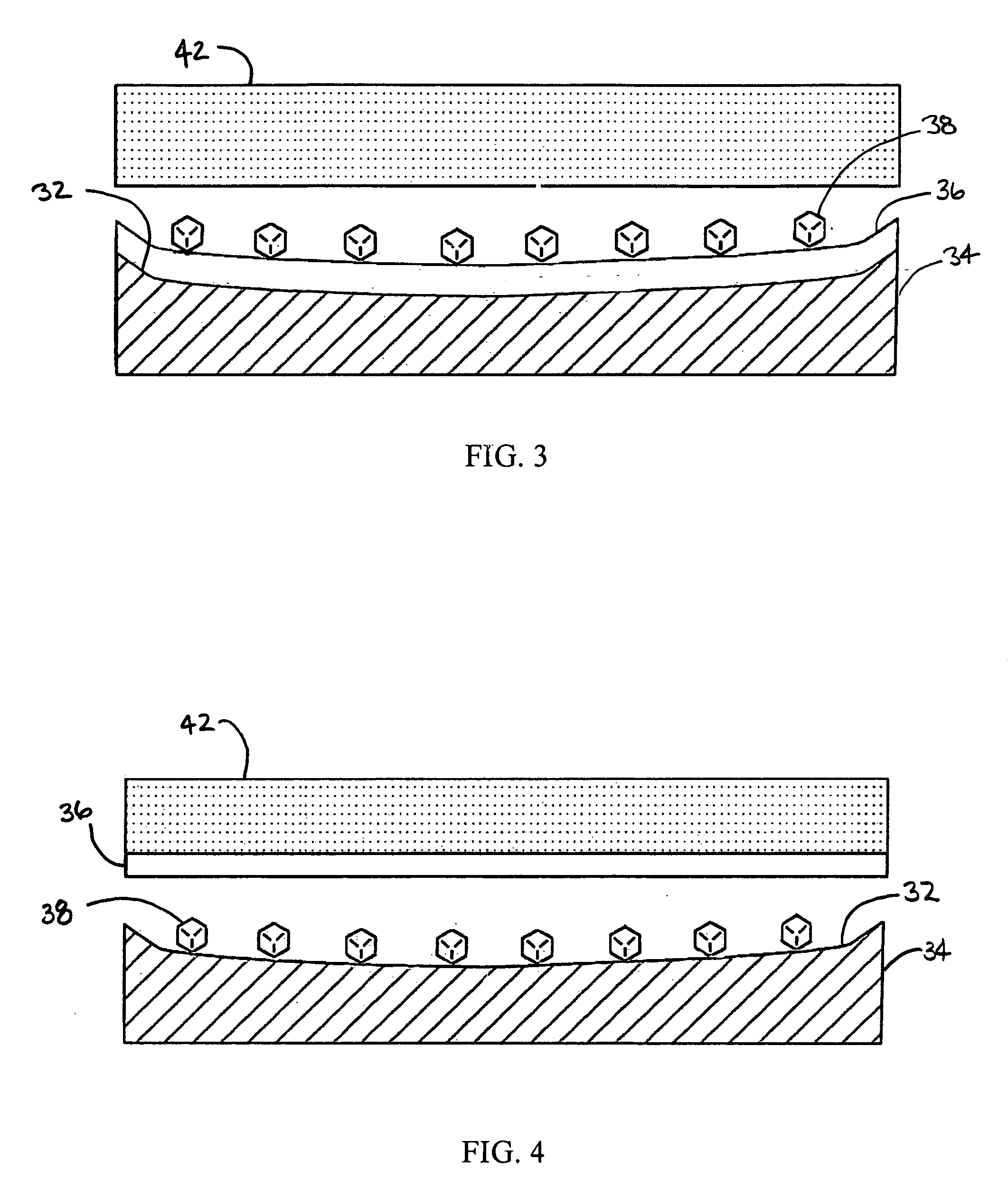Methods of bonding superabrasive particles in an organic matrix
a technology of organic matrix and superabrasive particles, which is applied in the direction of gear teeth, gear teeth, gear-teeth manufacturing apparatus, etc., can solve the problems affecting the distribution of mechanical forces, and achieve the effect of minimizing mechanical stress and improving retention of superabrasive particles
- Summary
- Abstract
- Description
- Claims
- Application Information
AI Technical Summary
Benefits of technology
Problems solved by technology
Method used
Image
Examples
example 1
[0094] 80 / 90 mesh diamond particles (MBG-660, Diamond Innovations) are arranged with a template on a 100 mm diameter, 10 mm thick flat base plate. The diamond particles form a grid pattern with an inter-diamond pitch of about 500 microns. The plate is placed at the bottom of a steel mold and covered with a polyimide resin powder. Subsequently, the entire assembly is pressed to 50 MPa pressure and 350° C. for 10 minutes. The polyimide consolidated plate is 7 mm thick with nickel coated diamond particles forming a grid on one side. A conventional grinding wheel with silicon carbide grit is used to grind the surface to expose the diamond particles to about 60 microns. The final product is a pad conditioner with uniformly exposed diamonds.
example 2
[0095] The same procedure is followed as Example 1, however a phenolic resin is used in place of the polyimide resin, and the forming temperature is reduced to 200° C.
example 3
[0096] The same procedure is followed as Example 1, however the base plate is precoated with a layer of clay that is about 60 microns thick. After hot pressing, the clay is scraped off, exposing the diamond particles protruding from the polyimide resin layer.
PUM
| Property | Measurement | Unit |
|---|---|---|
| Length | aaaaa | aaaaa |
| Fraction | aaaaa | aaaaa |
| Length | aaaaa | aaaaa |
Abstract
Description
Claims
Application Information
 Login to View More
Login to View More - R&D
- Intellectual Property
- Life Sciences
- Materials
- Tech Scout
- Unparalleled Data Quality
- Higher Quality Content
- 60% Fewer Hallucinations
Browse by: Latest US Patents, China's latest patents, Technical Efficacy Thesaurus, Application Domain, Technology Topic, Popular Technical Reports.
© 2025 PatSnap. All rights reserved.Legal|Privacy policy|Modern Slavery Act Transparency Statement|Sitemap|About US| Contact US: help@patsnap.com



